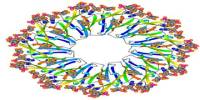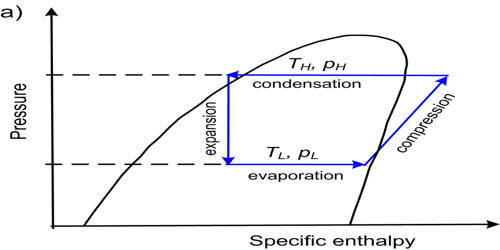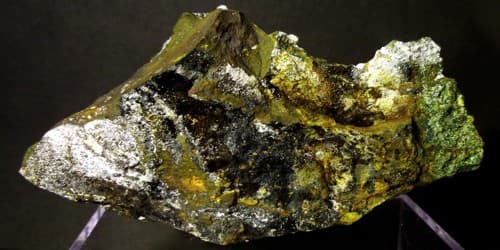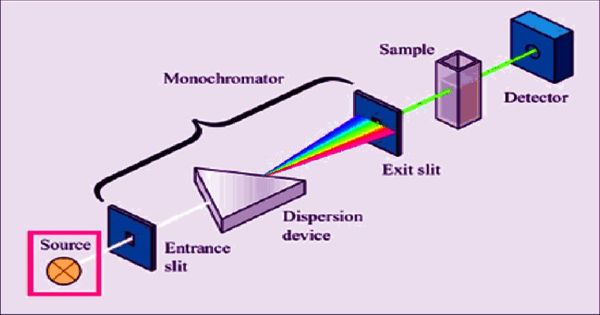Strontium titanate, also known as SrTiO3, is a strontium and titanium oxide with the chemical formula SrTiO3. It is a centrosymmetric paraelectric material with a perovskite structure at room temperature. At room temperature, it has a cubic structure, but at temperatures below 105 K, it transforms into a tetragonal structure. It approaches a ferroelectric phase transition with a very large dielectric constant ~104 at low temperatures but remains paraelectric down to the lowest temperatures measured as a result of quantum fluctuations, making it a quantum paraelectric.
Its primary application has been in its synthesized form, where it is occasionally encountered as a diamond simulant, precision optics, varistors, and advanced ceramics. This product is currently marketed under the brand name Fabulite for use in jewelry.
Properties
Strontium titanate is both denser (specific gravity 4.88 for natural, 5.13 for synthetic) and softer than diamond (Mohs hardness 5.5 for synthetic, 6–6.5 for natural). For very pure crystals, it has a specific resistivity of more than 109 Ω-cm. It can also be found in high-voltage capacitors.
- Compound Formula: O3SrTi
- Molecular Weight: 183.49
- Appearance: Off-white to gray powder
- Melting Point: 2060 °C
- Boiling Point: N/A
- Density: 4.81 g/cm3
- Solubility in H2O: N/A
- Exact Mass: 183.838302
Doping introduces mobile charge carriers, which results in Fermi-liquid metallic behavior even at very low charge carrier densities. Strontium titanate becomes superconducting at high electron densities below 0.35 K and was the first insulator and oxide discovered to be superconductive.
Occurrences
Natural tausonite can also be found in Cerro Sarambi, Concepción department, Paraguay, and along the Kotaki River in Honsh, Japan, in addition to its type locality of the Murun Massif in the Sakha Republic.
Applications
Varistors use strontium titanate, and thin strontium titanate films are used in tunable HTS (high temperature superconducting) microwave filters.
From the 1950s to the 1970s, strontium titanate was a popular diamond simulant that was sold under a variety of brand names. Although its unexpected fire piqued consumers’ interest, its lack of durability led to consumer dissatisfaction. Strontium titanate is used in optical instruments, high-voltage capacitors, voltage-dependent resistors, advanced ceramics, and superconductor substrates, in addition to being an attractive jewelry stone.
















